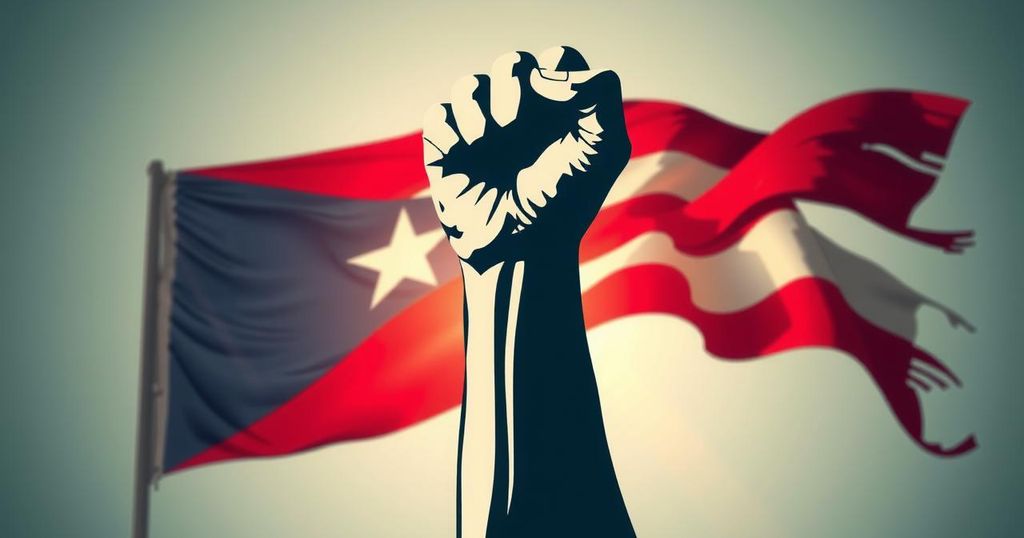The article explores the historical and ongoing armed resistance in Puerto Rico against U.S. colonial rule, emphasizing the pivotal role of the Nationalist Party and later groups like the FALN. It chronicles the struggles faced, the tactics employed, and the enduring commitment to liberating Puerto Rico from imperialism. There is an acknowledgement of the importance of both armed struggle and political education in the fight for independence.
The path to liberation for Puerto Rico from American imperialism and colonialism lies in revolution. As a proud Puerto Rican, I advocate for the establishment of a revolutionary communist and nationalist party. Historically, the Nationalist Party of Puerto Rico, formed in 1922, fought against U.S. colonial rule and advocated for independence following the 1898 Spanish-American War. Led by figures like Pedro Albizu Campos, this party organized events to promote nationalism even as its leaders faced repression by the colonial settlers.
The Nationalist Party faced severe opposition, notably with the Gag Law of 1948, which criminalized nationalism and the display of the Puerto Rican flag. After years of repression and public outcry, the law was eventually deemed unconstitutional in 1957. The party, nonetheless, persisted in its struggle for independence, launching insurgency efforts in Washington and other locations in the early 1950s.
Revolts known as the Cries of Jayuya and Utuado erupted in 1950 in response to police violence against nationalists. The attacks left casualties on both sides and marked a significant moment of defiance. Shortly after, two nationalists attempted an assassination of President Harry Truman, indicating a desperate fight against perceived tyranny. On March 1, 1954, members of the Nationalist Party attacked the U.S. Capitol, once again championing Puerto Rican independence with demands for recognition amid gunfire.
In the wake of earlier failures, subsequent revolutionary movements emerged, many influenced by Marxist-Leninist ideals. Various armed groups such as the Armed Liberation Commandos and others recognized the necessity of armed resistance coupled with political education to free Puerto Rico. Throughout the late ’60s, the Armed Liberation Commandos conducted numerous attacks targeting corporate interests linked to U.S. exploitation of the island amid solidarity with local workers.
The Armed Forces of National Liberation (FALN), which evolved from previous groups, emerged in 1974, launching a renewed struggle for Puerto Rican independence, particularly seeking the release of imprisoned nationalist leaders. Utilizing a combination of military strategy and grassroots outreach, the FALN sought to highlight the inequalities Puerto Ricans faced, including systemic racism and colonial oppression.
The legacy of the Puerto Rican armed resistance is crucial in the broader struggle against imperialism. The FALN emphasized resilience by prodding marginalized communities to rise against oppression. This historical context underscores the continuing need for various tactics in the struggle against colonial forces, whilst recognizing the importance of political engagement among the Puerto Rican diaspora to advance the liberation movement.
Supporters of Puerto Rican freedom exhibit a commitment to continued revolutionary action against the oppressive forces that shape their reality. While not every group may align with armed struggle, there is respect for the diverse approaches taken by oppressed communities to assert their rights and freedoms. The spirit of nationalism and revolutionary fervor lives on, advocating action and strategy to reclaim the rights of the Puerto Rican nation.
This article discusses the armed resistance movements in Puerto Rico against U.S. colonial rule, primarily through the lens of the Nationalist Party of Puerto Rico and subsequent groups that advocated for independence. The historical context of U.S. involvement in Puerto Rico, the formation of nationalistic movements, and the impacts of colonial legislation form the backbone of this resistance. It highlights the evolution of resistance tactics from initial uprisings to organized armed struggles, reflecting an ongoing struggle against imperialism and systemic oppression.
The narrative of armed resistance in Puerto Rico illustrates the deeply rooted desire for liberation from colonialism and imperialism. From the Nationalist Party to the FALN, these movements underscore the significance of revolutionary action and political unity. The legacy of these struggles informs contemporary efforts toward Puerto Rican independence, emphasizing diverse methodologies in the ongoing fight against systemic oppression. The steadfast call for liberation remains a poignant reminder of Puerto Rico’s complex history and unyielding spirit.
Original Source: www.workers.org






